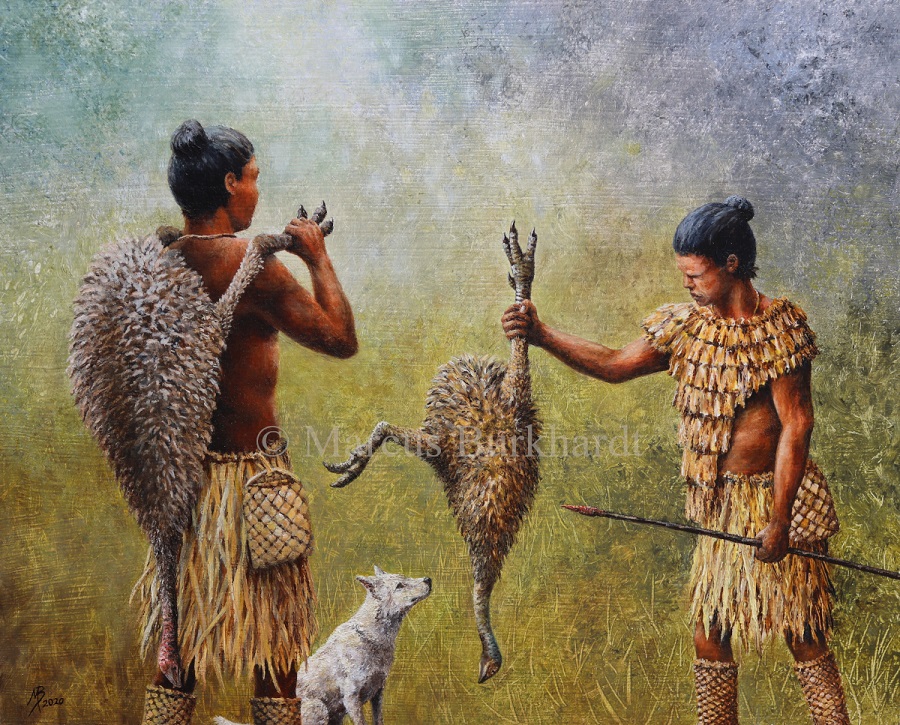
Acrylic and oil paint on panel, 2020
50 x 40 cm

Acrylic and oil paint on panel, 2020
50 x 40 cm
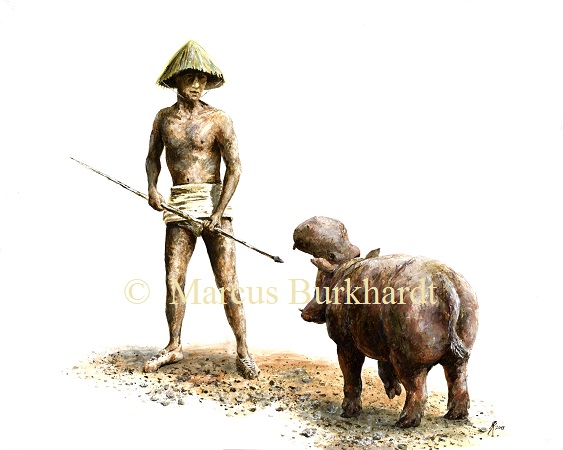
Cyprus in the Mesolithic: A man hunts a Cyprus dwarf hippopotamus (Hippopotamus minor). This was a relative to the modern hippo (Hippopotamus amphibius) and characterized by a special foot-anatomy which made it walking on just two toes per foot and was an adaption to a more terresric way of life. This specialized hippo became extinct very fast after the arrival of humans on prehistoric Cyprus.
Acrylic paint on paper, 2019
50 x 40 cm
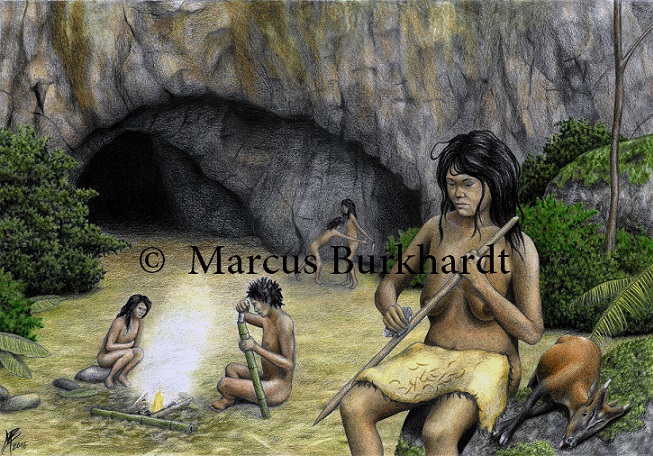
Stone Age in Vietnam: Hoabinhian or Hòa Bình culture
Coloured pencil, 2016
42 x 29,5 cm
Published in: I. Kraft, J. F. Tolksdorf, Archäologie | Vietnams Altsteinzeit als Bambuszeit?, Spektrum der Wissenschaft, October 2017, 70-77.
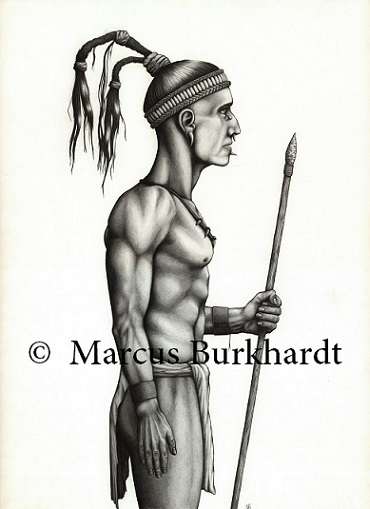
Maya warrior
Pencil, 2012
59,5 x 42 cm
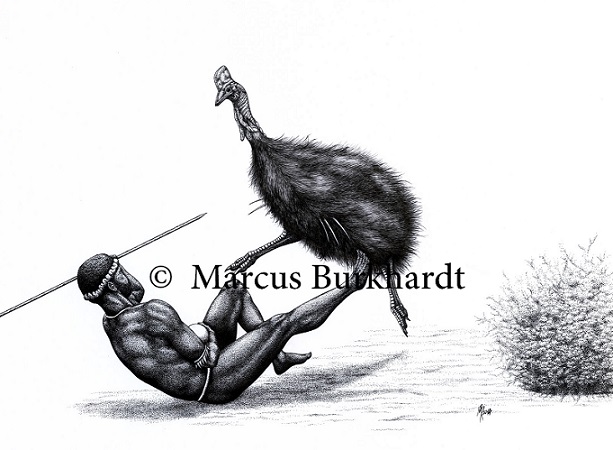
Papuan and offensive cassowary (Casuarius casuarius)
Ink, 2014
70 x 50 cm
MoVo – Moderne Vogelbilder, 2015, Heineanum Halberstadt